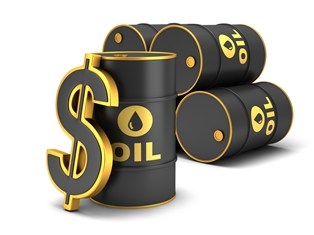…Nigeria’s 2020 budget threatened
Emeka Okoroanyanwu
All have been let loose in the international oil market after the disintegration of the OPEC alliance with other global major oil producers.
As at early this morning, the price of Brent, Nigeria’s crude benchmark tumbled by 31% in open trading in Asia, selling at $31 per barrel, the lowest since 1991 Gulf War.
Plummeted by a dip in demand due to the outbreak of Coronavirus on China, the oil market is facing its worst crisis with oil producing majors in a free-for-all supply.
Saudi Arabia, over the weekend, slashed its official price by over 30%, even as Russia asked its oil producing companies to pump as much oil as they could.
The implication of the price war on Nigeria is grave as the country’s 2020 budget is benchmarked on $57 per barrel. What will happen to the economy if the price war persists?
As Brent collapsed as low as $31 a barrel, Goldman Sachs Group Inc. warned prices could drop into the $20.
“It’s unbelievable, the market was overwhelmed by a wave of selling at the open,” said Andy Lipow, president of Houston energy consultancy Lipow Oil Associates LLC. “OPEC+ has clearly surprised the market by engaging in a price war to gain market share.”
READ ALSO: http://CAMA Amendment: Senate to boost Nigeria’s business sector, economy
Aramco’s unprecedented pricing move came just hours after the talks between Organization of Petroleum Exporting Countries and its allies ended in dramatic failure. The breakup of the alliance effectively ends the cooperation between Saudi Arabia and Russia that has underpinned oil prices since 2016.
The cuts in monthly pricing by state producer Saudi Aramco were the first indication of how the Saudis will respond, an opening salvo in the impending price war. Offering huge discounts in Asia, Europe and the U.S., the world’s biggest exporter will be hoping to entice refiners to purchase Saudi crude at the expense of other suppliers.
At the same time, Aramco has privately told some market participants it plans to raise production well above 10 million barrels a day next month and could even reach a record 12 million barrels a day, according to people familiar with the conversations, who asked not to be named to protect commercial relations.
Brent for May settlement tumbled as much as $14.25 a barrel to $31.02 on the London-based ICE Futures Europe Exchange. That’s the biggest intra-day loss since the U.S.-led bombing of Iraq in January 1991. It pared back some of those losses to $35.76 a barrel by 6:25 a.m. in Singapore, down $9.51.
West Texas Intermediate crude slid as much as 27%, or $11.28, to $30 a barrel. Trading was frozen for the first few minutes of trading because of the scale of the loss.
The prospect of another price war is spooking traders who will remember the crash that began in 2014, when an explosion in U.S. shale production prompted OPEC to open the spigots in an attempt to suppress prices and curtail shale output.
That strategy ended in failure, with shale producers proving too resilient and Brent crude tumbling below $30 a barrel in 2016 amid a global glut of crude. And it was that crash that prompted OPEC to club together with Russia and others to curtail output and help shore up their oil-dependent economies.
That alliance now seem heading to the rocks with grave consequences to oil producing nations.


